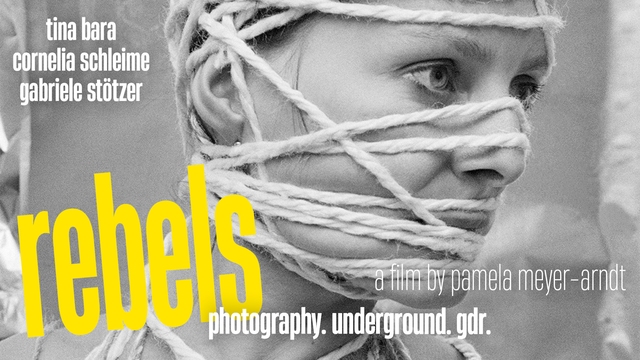The Producers

Pamela Meyer-Arndt – Director/ Producer
In 2003, Pamela Meyer-Arndt moved from New York to Prenzlauer Berg, Berlin. The omnipresent traces of German history, like the crumbling of the old facades, and the shimmering atmosphere of an ongoing existence of Bohemia of the East, inspired her to look for photographic documentation and witnesses of the GDR. This investigation led to what would be her documentary about photography and art in the GDR, called “Ostfotografinnen” (“female photographers of the East”), in cooperation with Sibylle Bergemann, Helga Paris and Gundula Schulze Eldowy. Since then, Pamela has been working with biographies of artists from Eastern Germany, such as the photographers Ute Mahler & Werner Mahler and Roger Melis. Her films can be seen on public television, as theatrical productions and at cultural events, as well as in cinemas.
Making The Film

Looking for protagonists for this film, I asked myself: which female artists were active as photographers as well as dissidents? There was no easy answer to this question; most dissidents were mainly politically active and didn’t take photography as seriously. But I was looking for art that left a strong impression, held me in its spell, that I could not let go of. Some of Tina Bara’s, Cornelia Schleime’s, and Gabriele Stötzer’s photography startled me at first. It took me some time to make sense of it. In the process of shooting the film, the atmosphere during our conversations was extremely emotionally charged which even made me dizzy sometimes. I remember needing to get some fresh air on the balcony while shooting with Gabriele in Erfurt. Her stories were incredible to me.
When I reflect on what motivated me to make this film, I think of the strong, universal expression in the photographs. The pictures are impressive depictions of female resistance in times of extreme oppression. These works of art are timeless and could have been made all over the world. Skin, nudity, vulnerability, the gesture of extradition – it is so strong and still moves me emotionally. I wanted to give this form of self-expression a stage where it could be seen widely by the public. Lastly, one final question: would we (from the West) have ever suspected such a sense of freedom on the inside of the GDR as it can be seen by those three women? Surprisingly, the photographs are only recently being discovered, through this film and elsewhere, and are now being brought to light.
Pamela Meyer-Arndt, Director
 Tina Bara, Cornelia Slime and Gabriele Stötzer are rebels. As fearless young women in the 1970s and 80s in the GDR, they made art expressing their anger against the oppressive regime, and claiming their right to freedom. Their uncompromising photographs narrate how it feels to be at the mercy of a system that suffocates young creative voices. But when the conflict with state security escalates, they have to make a decision: stay or go.
Tina Bara, Cornelia Slime and Gabriele Stötzer are rebels. As fearless young women in the 1970s and 80s in the GDR, they made art expressing their anger against the oppressive regime, and claiming their right to freedom. Their uncompromising photographs narrate how it feels to be at the mercy of a system that suffocates young creative voices. But when the conflict with state security escalates, they have to make a decision: stay or go.








